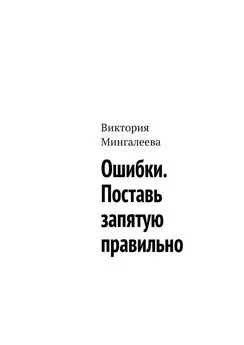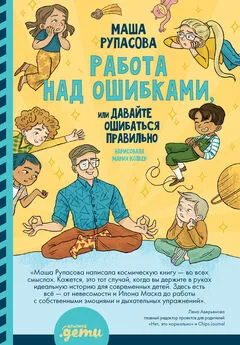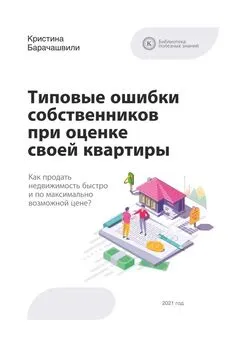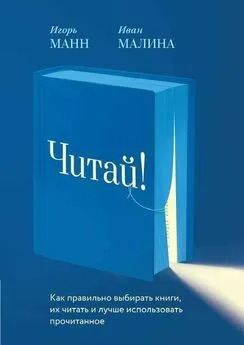Ив Жангра - Ошибки в оценке науки, или как правильно использовать библиометрию
- Название:Ошибки в оценке науки, или как правильно использовать библиометрию
- Автор:
- Жанр:
- Издательство:ООО «ЛитРес», www.litres.ru
- Год:2018
- ISBN:нет данных
- Рейтинг:
- Избранное:Добавить в избранное
-
Отзывы:
-
Ваша оценка:
Ив Жангра - Ошибки в оценке науки, или как правильно использовать библиометрию краткое содержание
Ошибки в оценке науки, или как правильно использовать библиометрию - читать онлайн бесплатно полную версию (весь текст целиком)
Интервал:
Закладка:
69
69См.: Eugene Garfield, “Random thoughts on citationology. Its theory and practice,” in Scientometrics , 43, 1998, pp. 69–76.
70
70См.: Eugene Garfield, “‘Science Citation Index.’ A new dimension in indexing,” in Science , 144, 8 May, 1964, pp. 649–654.
71
71См.: Norman Kaplan, “The norms of citation behavior: prolegomena to the footnote,” in American Documentation , 16, 1965, pp. 179–184.
72
72Derek de Solla Price, Little Science, Big Science , op. cit., p. 65.
73
73Charles Bazerman, Shaping Written Knowledge (Madison: The University of Wisconsin Press, 1988).
74
74James E. McClellan III, Specialist Control. The Publications Committee of the Académie Royale des Sciences (Paris), 1700–1793 (Philadelphie: American Philosophical Society, 2003), pp. 33 and 38.
75
75См.: Loet Leydesdorff, “Theories of citation?”, in Scientometrics , 43, 1998, pp. 5–25.
76
76См.: Blaise Cronin, The Citation Process. The Role and Significance of Citations in Scientific Communication , Londres, Taylor Graham, 1984.
77
77См.: G. Nigel Gilbert, “Referencing as persuasion,” in Social Studies of Science , 7, 1977, pp. 113–122.
78
78См.: Joseph Bensman, “The aesthetics and politics of footnoting,” in Politics, Culture and Society , 1, 1988, pp. 443–470; в этом длинном эссе нет ни одной ссылки или конкретных данных, а лишь пространная спекуляция на тему прогрессирующей самореферентности и стратегий цитирования.
79
79См.: Vincent Larivière, Alesia Zuccala, Éric Archambault, “The declining scientific impact of theses: implications for electronic thesis and dissertation repositories and graduate studies,” in Scientometrics , 74, 2008, pp. 109–121; см. также: Matthew L. Wallace, Vincent Larivière, Yves Gingras, “A small world of citations? The influence of collaboration networks on citation practices,” in PlosOne , 7, 2012, e33339.doi:10.1371/journal.pone.0033339.
80
80См.: Susan Bonzi, H. W. Snyder, “Motivations for citation: A comparison of self citations and citations to others,” in Scientometrics , 21, 1991, pp. 245–254; см. также: Béatrice Millard, “Les citations scientifiques: des réseaux de références dans des univers de références. L’exemple d’articles de chimie,” in REDES, Revista hispana para el análisis de redes sociales , 19, 2010, pp. 69–93.
81
81См.: ESF [Европейский научный фонд], ESF Survey Analysis Report on Peer Review Practices , ESF, March 2011; www.esf.org/fileadmin/Public_documents/Publications/pr_guide_survey.pdf.
82
82Marie Boas Hall, Henry Oldenburg. Shaping the Royal Society (Oxford: Oxford University Press, 2002), p. 84. Первым научным журналом действительно был Journal des savants , издававшийся Дени де Салло с января 1665 года. Однако три месяца спустя его выпуск был запрещен. Потом он был возобновлен, однако его содержание стало весьма разнородным и касалось всех видов деятельности «литературной республики». Это была скорее литературная газета, нежели реферируемый научный журнал в современном смысле.
83
83 Idem, ibidem , pp. 167–169.
84
84См.: Y. Gingras, Sociologie des sciences, op. cit ., pp. 48–51.
85
85См.: Lewis Pyenson, “Physical sense in relativity: Max Planck edits the Annalen der Physik , 1906–1918,” in Annalen der Physik , 17, 2008, pp. 176–189.
86
86См. подробнее эту историю в: Daniel Kennefick, “Einstein versus the Physical Review ,” in Physics Today , 58, September 2005, pp. 43–48.
87
87См.: Y. Gingras, Les Origines de la recherche scientifique au Canada (Montréal: Boréal, 1991).
88
88См.: James M. England, A patron for pure science: the National Science Foundation’s formative years, 1945–57 (Washington D. C., NSF, 1982).
89
89Stephen Cole, Jonathan R. Cole, Gary A. Simon, “Chance and consensus in peer review,” in Science , 214, 1981, pp. 881–886.
90
90См. подробное исследование критериев оценки в: Michèle Lamont, How professors think. Inside the curious world of academic judgment (Cambridge, MA: Harvard University Press, 2009).
91
91См.: Thane Gustafson, “The controversy over peer review,” in Science , 190, 12 December 1975, pp. 1060–1066.
92
92См.: R. N. Kostoff, “Performance measures for government-sponsored research: overview and background,” in Scientometrics , 36 (3), 1996, pp. 281–292; см. также: Fabien Jobard, “Combien publient les politistes. La productivité des politistes du CNRS et leurs supports de publication,” in Revue française de science politique , 60, 2010, pp. 117–133.
93
93См. анализ суждений по поводу найма профессоров в: Christine Musselin, Le Marché des universitaires (Paris: Presses de Sciences Po, 2006).
94
94См.: Eugene Garfield, “Citation indexes in sociological and historical research,” in American Documentation , 14 (4), 1963, pp. 289–291.
95
95Eugene Garfield, “Citation indexing for studying science,” in Nature , 227, 15 August 1970, pp. 669–671.
96
96См.: Yves Gingras, Matthew L. Wallace, “Why it has become more difficult to predict Nobel prize winners: a bibliometric analysis of nominees and winners of the chemistry and physics prizes (1901–2007),” in Scientometrics , 82, 2010, pp. 401–412.
97
97Eugene Garfield, “Citation indexing for studying science,” in op. cit. , p. 671.
98
98См.: Janet B. Bavelas, “The social psychology of citations,” in Canadian Psychological Review , 19 (2), 1978, pp. 158–163.
99
99См.: Theodore M. Porter, Trust in Numbers. The Pursuit of Objectivity in Science and Public Life (Princeton: Princeton University Press, 1996).
100
100См.: Nicholas Wade, “Citation analysis: a new tool for science administrators,” in Science , 188, 2 May 1975, pp. 429–432.
101
101См.: Jorge E. Hirsch, “An index to quantify an individual’s scientific research output,” Proceedings of the National Academy of Sciences , 102, 2005, pp. 16569–16572.
102
102См.: Thed N. van Leeuwen, “Testing the validity of the Hirsch-index for research assessment purposes,” in Research Evaluation , 17, 2008, pp. 157–160.
103
103Ludo Waltman, Nees Jan van Eck, “The inconsistency of the h-index,” 2011, in ArXiv:1108.3901v1.
104
104Индексу Хирша был посвящен в недавнем прошлом вал наукометрических публикаций, однако авторы некоторых из этих статей, по всей видимости, мало озабочены вопросом, имеет ли индекс какой-либо смысл, и довольствуются его применением без критической рефлексии. См. анализ этой серии публикаций в: Ronald Rousseau, Carlos García-orita and Elias Sanz-Casado, “The h-bubble,” in Journal of Informetrics , 7 (2), 2013, pp. 294–300.
105
105См.: http://pubs.acs.org/cen/science/86/8621sci1.html.
106
106См.: Robert Adler, John Ewing, Peter Taylor, “‘Citation Statistics,’ a report from the International Mathematical Union (IMU) in cooperation with the International Council of Industrial and Applied Mathematics (ICIAM) and the Institute of Mathematical Statistics (IMS),” in Statistical Science , 24, 2009, pp. 1–14.
107
107См.: David Edge, “Quantitative measures of communication in science: a critical review,” in History of Science , 17, 1979, pp. 102–134.
108
108См.: Éric Archambault, Vincent Larivière, “History of journal impact factor: contingencies and consequences,” in Scientometrics , 79 (3), 2009, pp. 639–653.
109
109См.: Wolfgang Glänzel, Henk F. Moed, “Journal Impact Measures in Bibliometric Research,” in Scientometrics , 53, 2002, pp. 171–193.
110
110См.: Richard Smith, “Journal accused of manipulating impact factor,” in British Medical Journal , 314, 1997, p. 461; Frank-Thorsten Krell, “Should editors influence journal impact factors?”, in Library Publishing , 23, 2010, pp. 59–62; Allen W. Wilhite & Eric A. Fong, “Coercive citation in academic publishing,” in Science , 335, 3 February, 2012, pp. 542–543.
111
111См.: James Testa, “Playing the system puts self-citation’s impact under review,” in Nature , 455, 9 October, 2008, p. 729.
112
112См.: Paul Jump, “Journal citation cartels on the rise,” in Times Higher Education , 21 June 2013, http://www.timeshighereducation.co.uk/news/journal-citation-cartels-on-the-rise/2005009.article.
113
113См.: Y. Gingras, Sociologie des sciences , op. cit., pp. 67–69.
Читать дальшеИнтервал:
Закладка:
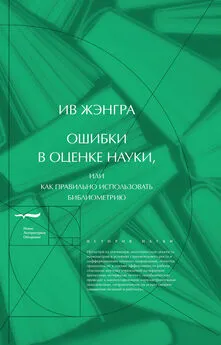


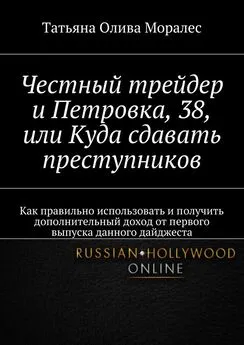
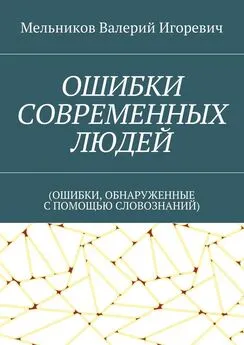
![Ив Жангра - Ошибки в оценке науки, или как правильно использовать библиометрию [калибрятина]](/books/1061749/iv-zhangra-oshibki-v-ocenke-nauki-ili-kak-pravilno.webp)

